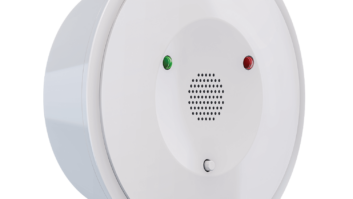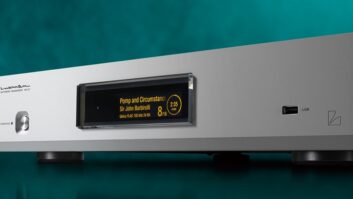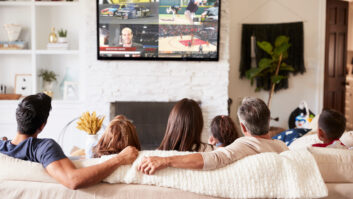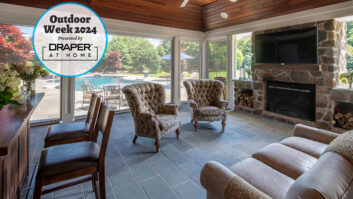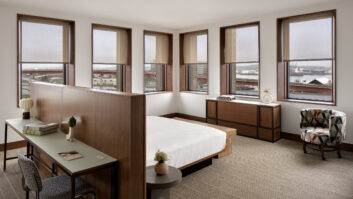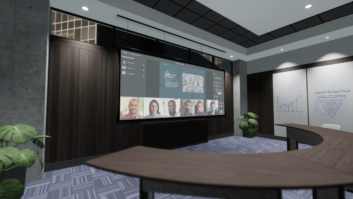Controlling Light and Acoustics in Theaters Containing Glass

Sam Cavitt (samcavittmedesign.tv) is president of Paradise Theater in Kihei, Hawaii, and Carlsbad, California.
Large reflective surfaces in a home theater require acoustical consideration, and windows are particularly difficult to treat. If the window is also a door, such as sliding doors or decorative single light doors, the positioning and access/egress issues come into play, as well.
Try as we might, windows will “happen,” due to local building code requirements, architectural standards for a community, aesthetic sensibilities, and client preference. There are, however, exceptions for home theaters in the Uniform Building Code (UBC), and when that doesn’t work, automated shades are usually offer your best alternative.
What the Code Says
The general rule for habitable residential spaces is that adequate windows for natural light and ventilation, and in some cases egress, are required. The argument is that home theaters are not traditional habitable spaces and certainly not sleeping rooms where these rules are more stringent. It states further that natural light and natural ventilation runs counterproductive to the purpose of the home theater. Thus the exception for home theaters found in the UBC.
When the Inspector Won’t Budge
On a current project under construction we are facing a situation where a window is of no practical use in a private theater. Unfortunately, the local building department is intractable regarding any exception to the ventilation and egress considerations. Our solution involved creating a millwork pocket within which a roman shade drops to provide blackout of all light from the window. Acoustically, the fabric and lining of the shade has been specified to provide a fairly good mid-band and high-frequency absorption due to the shade’s position off the surface. This has been matched with the acoustical treatment on the opposite wall. While this is not ideal, it is effective.


When windows cannot be avoided within a theater room, specify the closure hardware to optimize the potential sound control issue, design motorized blackout shades for light control, and specify special lining for acoustical properties. Architectural Standards
If a community has an architectural review board requiring all project plans to be approved, the committee may refuse to bend on windows. The good news in this case is that the window can be modified to be visible only from the outside.
Remember that this window can never be opened for cleaning on the inside, so consider treating the glass with an opaque, UV resistant coating so any dust or other unsightly condition inside the glass will not be visible.
Design Team Members Must Coexist
Often an architectural standard for a home is established before we are able to have any influence. The project architect has carefully designed the doors and windows throughout a residence, and if the theater has any exterior walls, it will share this window and door standard. This standard may include type and quantity of windows and doors on each exterior wall, positioning of such, height, and width. Some of these characteristics may be in direct conflict with theater functionality.
One typical issue found in my part of the world involves large sliding glass entry doors at the rear of the theater. We have solved this issue in the past by specifying the closure hardware to optimize the potential sound control issue, designing motorized blackout shades for the light control issue, specifying special lining for the acoustical properties and finally, engineering lift solutions for the projector location.
In a perfect world theater designers wouldn’t have to “do windows.” But maybe that wouldn’t be so perfect. After all, these theaters are our client’s dream theaters and if designers refused to do windows we might not do theaters.
Builder Code Exceptions for Theaters
According to the Uniform Building Code, “code home theaters” can be installed without required natural light and ventilation based on the following conditions:
1. A home theater system is permanently installed prior to final inspections
2. A mechanical ventilation system capable of at least two air changes per hour during such times as the room is occupied, shall be permanently installed and maintained
3. Artificial lighting capable of producing at least six foot-candles at a height of 30 inches above the floor level shall be permanently installed and maintained
4. The theater room shall not be used for sleeping purposes
5. A smoke detector is properly installed in the home theater area
6. An approved battery-operated emergency lighting system shall be permanently installed and maintained.
